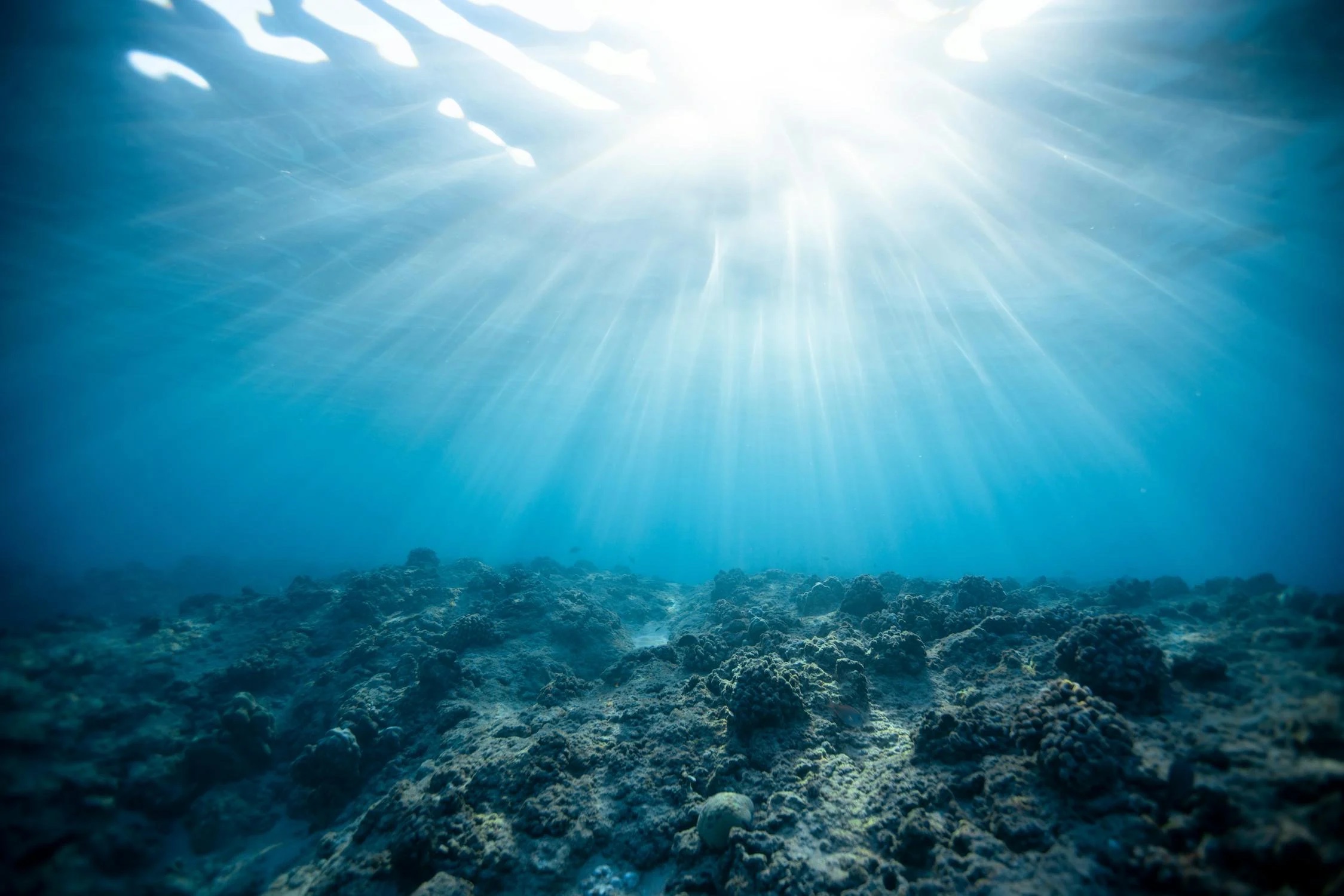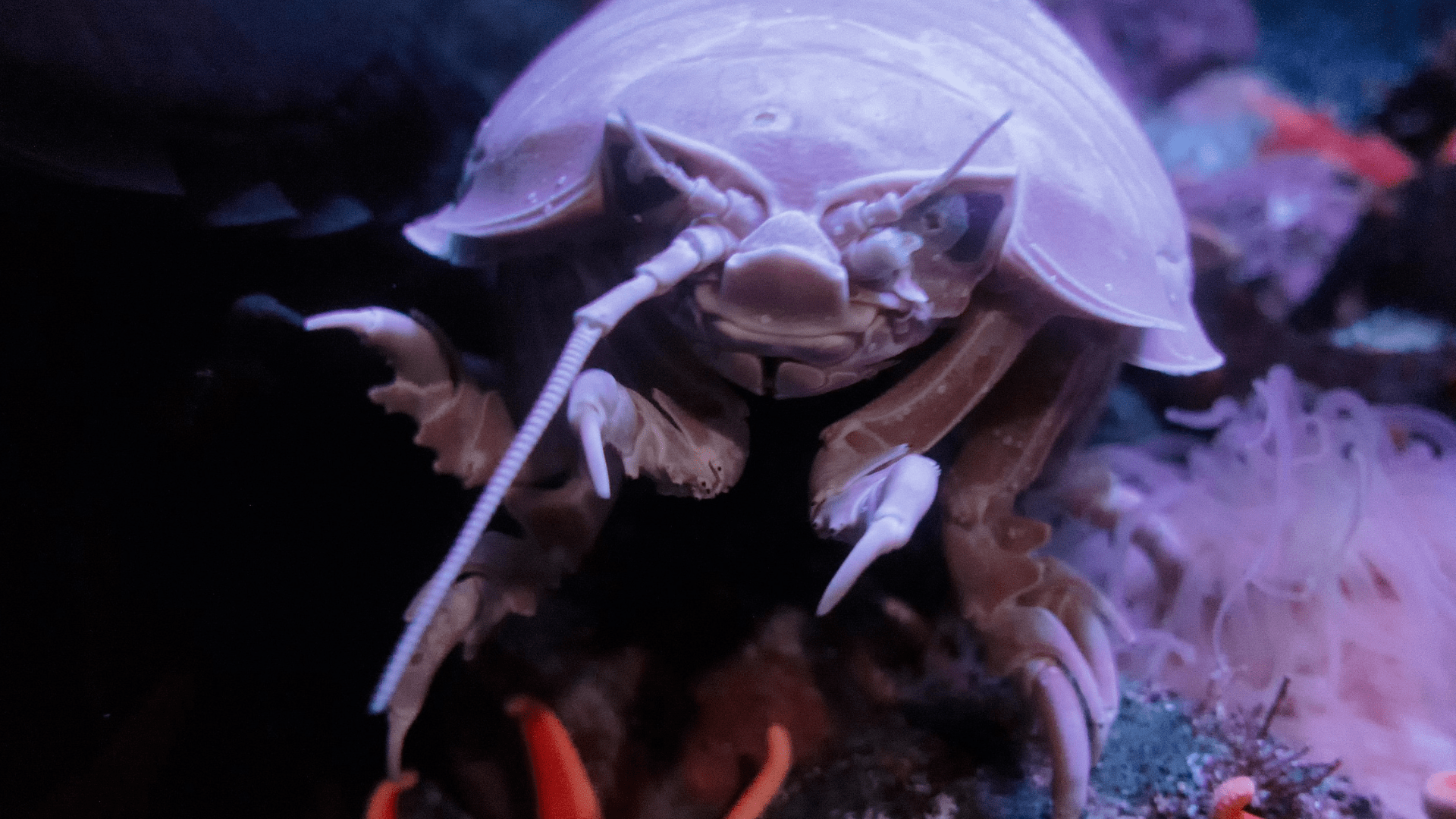Sci-Fi Creatures in the Gulf of Mexico Devour Dead Alligators Dumped by Scientists
Marine biologist Craig McClain embarked on an unusual research project by dropping dead alligators into the Gulf of Mexico.
His aim was to understand how deep-sea creatures react to large food sources in an environment where sustenance is scarce.
The Gulf of Mexico
The Gulf of Mexico, covering 600,000 square miles, is a diverse and dynamic body of water. It is bordered by Mexico and the southeastern United States, with a subtropical and tropical climate.

Yinan Chen/Wikimedia Commons
This region is known for frequent hurricane activity, including the devastating Hurricane Katrina in 2005.
Diverse Marine Life
Home to a variety of species, the Gulf hosts vampire squid, sea turtles, whale sharks, and the endangered Atlantic bluefin tuna.

Source: Wikimedia
This rich biodiversity makes it an ideal location for studying marine ecosystems and the interactions between different species, particularly scavengers.
The Role of Giant Isopods
Giant isopods, resembling oversized pill bugs and reaching up to a foot in length, were key players in McClain’s experiment. These deep-sea scavengers rely on decomposing marine animals for food, often enduring long periods without sustenance.

NOAA/Wikimedia Commons
The introduction of alligator carcasses provided them with a rare and substantial meal.
Discovering These Deep-Sea Crustaceans
Researchers have identified new deep-sea crustaceans, known as Bathynomus yucatanensis, in the Gulf of Mexico, where they scavenge for food at the bottom of the ocean.. These fourteen-legged bodies resemble their smaller relative, the woodlouse.

Source:
Another staggering difference between the isopods is its length. Measuring a foot long, the isopod shows the effects of deep-sea gigantism.
Studying These Massive Creatures
Although little is known about these giant isopods, a team of researchers from Taiwan, Japan, and Australia is investigating what distinguishes this species from Bathynomus giganteus, the giant isopods found throughout the tropical western Atlantic waters.

Source: Monterey Bay Aquarium
According to CNN, their research on the giant isopod was published in the Journal of Natural History.
Researching the Isopods
The study compared specimens collected off Mexico’s Yucatan Peninsula with other massive crustaceans gathered around Taiwan and Hong Kong.

Source: Wikimedia
The researchers were able to identify distinguishing characteristics that make the giant isopods stand out. Two defining characteristics are its creamy yellow coloring and more slender body proportions.
The Characteristics of Isopods
“Compared to B. giganteus, B. yucatanensis has more slender body proportions and is shorter in total length … and the pereopods [thoracic limbs] are more slender,” the researchers observe.

Source: Aquarium of Pacific
The creature also has a longer antenna, but shares some similarities with its relative like the same number of pleotelson spines, which protrude from the tail end of the crustacean.
Looking at the DNA
The DNA analysis of the giant isopods also shows that the B. yucatanensis is distinct from its close relatives. Currently, there are 20 known species of living Bathonymus, a group that inhabits the benthic zone of the ocean that is rarely explored.

Source: Wikimedia
The scientists behind the study acknowledge that the different species are very similar, but “there is a long history of misidentification of species in the genus.”
Species Mixed Up
“Bathynomus giganteus was discovered over a century ago, and more than 1,000 specimens have been studied with no suggestion until now of a second species with the same number of pleotelsonic spines,” they add.

Source: Wikimeida
The researchers add: “Superficial examination, using only pleotelson spines, could easily result in specimens of B. yucatanensis being misidentified as B. giganteus.”
The Difference Between Species
“Due to the different sequences of the two genes (COI and 16S rRNA), coupled with differences in morphology, we identified it as a new species,” they write.

Source: NOAA Ocean Exploration/Flickr
“B. giganteus is indeed the species closest to B. yucatanensis,” the authors assert. “This indicates that the two species likely had a common ancestor. Additionally, there may also be other undiscovered Bathynomus spp. in the tropical western Atlantic.”
Isopods Are at Risk
However, these giant isopods are already at risk, according to the study. “Some species of Bathynomus with commercial potential have become the targets of deep-sea trawl fisheries,” they say.

Source: Jeremy Bishop/Pexels
Although people only sporadically exploit giant isopods, managing Bathynomus fisheries requires knowing precisely which species are being caught.
The Feeding Frenzy
Upon discovering the alligator carcasses, giant isopods quickly found soft spots to penetrate, avoiding the tough hide.

Eric Kilby/Wikimedia Commons
They tunneled inside the carcasses, consuming the meat from the inside out. This feeding behavior highlights the adaptability and resilience of these deep-sea creatures.
The Connection Between Crocodiles and Isopods
“We really do not know the role that alligators, and more broadly their crocodilian relatives, play in connecting carbon highways between lands and oceans,” Dr. Craig McClain, executive director of Louisiana Universities Marine Consortium (LUMCON), who led a study published in PLOS, told SYFY WIRE.

Source: Don Arnold/WireImage
“However, given the large numbers of crocodilians that live near coastal habitats or spend time in the ocean, the potential is great.”
Why Are Isopods Viscous Scavengers
Isopods are known to go for everything from alfalfa to printer paper to alligators. In the video that showcases the study, isopods seem eager to eat anything that comes to the bottom of the ocean.

Source: Wikimedia
“We know that giant isopods are voracious scavengers,” McClain said, but why?
Not Alone in the Feast
However, the isopods were not the only ones trying to go after the alligators in the depths of the ocean. The seafloor is the largest ecosystem on the Earth but suffers from food deficit. Any free food floating down there is likely to get mauled.

Source: Wikimedia Commons
Amphipods, which look like shrimp, and grenadiers, small fish with enormous eyes and mouths compared to their bodies, devoured the alligator alongside the isopods.
Importance of the Experiment
McClain’s research sheds light on the scavenging processes in deep-sea ecosystems.

Source: ROV SuBastian/Schmidt Ocean Institute
By providing a large and unusual food source, he was able to observe how different species interact with it, offering insights into the ancient food chains that once existed in our oceans.
Ancient Food Chains
Scientists believe that large marine reptiles like alligators played a crucial role in the prehistoric ocean food chain.

James St. John/Wikimedia Commons
Fossil evidence suggests that the deaths of these reptiles provided essential nutrients to bottom-dwelling scavengers, similar to the way alligator carcasses do today.
Alligators in the Gulf
Finding alligator carcasses in the Gulf of Mexico is not uncommon, especially after storms.

Source: Bigmacthealmanac/Wikipedia
These reptiles often prey on marine animals like sharks and stingrays, blurring the lines between freshwater and marine ecosystems.
A Science Fiction Movie
“However, observing giant roly-polies eating an alligator carcass from the inside out is quite different from knowing it conceptually,” McClain said.

Source: Wikimedia
The researcher continued: “Sitting there in the dark, cold ROV mission control room about the research vessel watching this video taken 1.5 miles deep of this scene felt like we were in some sort of science fiction movie.”
The Unexplored Ocean
Despite covering 71% of Earth’s surface, over 80% of our oceans remain undiscovered. Scientists are making significant efforts to explore these depths, hoping to uncover new species and ecosystems.

Source: Wikimedia
Discoveries from missions like NOAA’s Voyage to the Ridge 2022 are just one example highlighting the importance of deep-sea research.
The Mystery of Ocean Holes
During the Voyage to the Ridge, scientists discovered evenly spaced holes on the ocean floor at 8,000 feet below sea level.

Source: YouTube/OceanX
These mysterious holes sparked various theories, from animal burrows seeking oxygen to creatures hunting for invertebrates. Such discoveries keep the quest for ocean knowledge exciting.
Medical Discoveries
Deep-sea exploration is not just about understanding marine life; it also has medical implications.

Source: Wikimedia
Many ocean organisms produce compounds with potential medicinal benefits, including anti-inflammatories and anti-cancer agents. Discovering these organisms could lead to groundbreaking medical advancements.
See Ya Later
McClain’s alligator experiment highlights the ongoing efforts to explore and understand our oceans.

AquaTT/Wikimedia Commons
By studying how deep-sea creatures interact with unexpected food sources, scientists can gain insights into ancient ecosystems and uncover potential medical breakthroughs.
